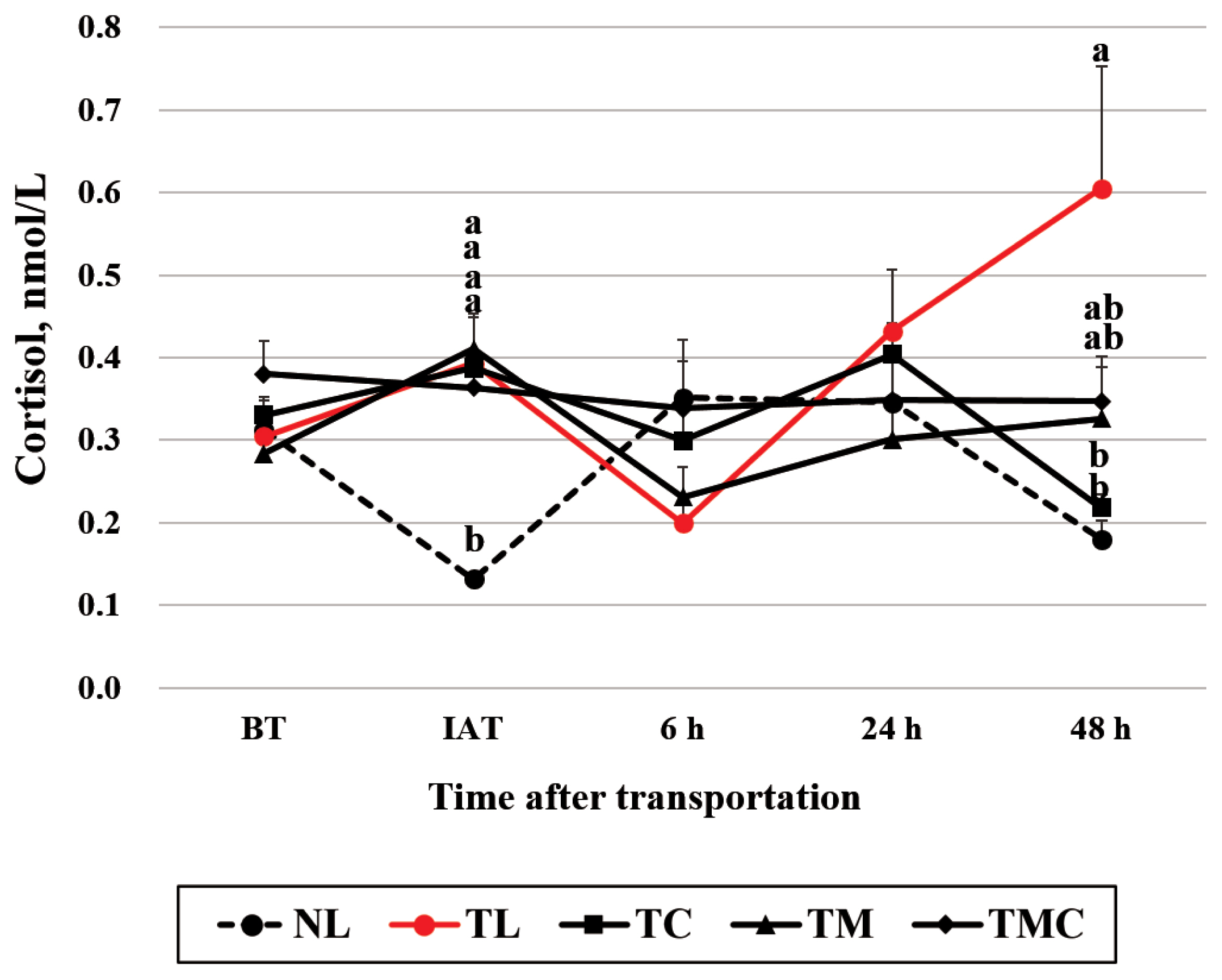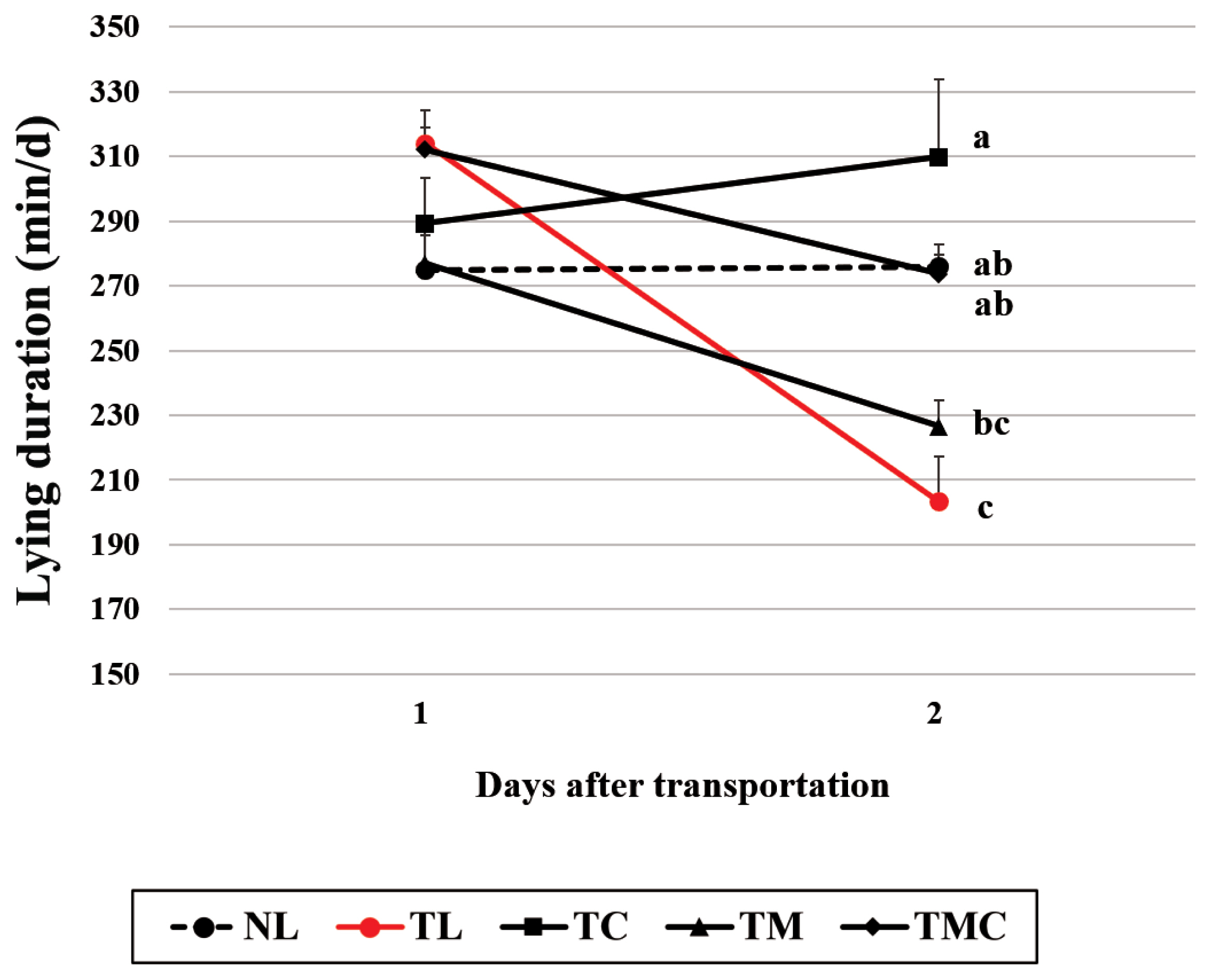1. Kang HJ, Lee IK, Piao MY, et al. Effects of road transportation on metabolic and immunological responses in Holstein heifers. Anim Sci J 2017; 88:140–8.
https://doi.org/10.1111/asj.12604


2. Arthington JD, Spears JW, Miller DC. The effect of early weaning on feedlot performance and measures of stress in beef calves. J Anim Sci 2005; 83:933–9.
https://doi.org/10.2527/2005.834933x


6. Burdick NC, Randel RD, Carroll JA, Welsh TH. Interactions between temperament, stress, and immune function in cattle. Int J Zool 2011; 2011:373197
https://doi.org/10.1155/2011/373197

8. Cole NA, Camp TH, Rowe LD, Stevens DG, Hutcheson DP. Effect of transport on feeder calves. Am J Vet Res 1988; 49:178–83.

10. Moonsie-Shageer S, Mowat DN. Effect of level of supplemental chromium on performance, serum constituents, and immune status of stressed feeder calves. J Anim Sci 1993; 71:232–8.
https://doi.org/10.2527/1993.711232x


12. Soltan MA. Effect of dietary chromium supplementation on productive and reproductive performance of early lactating dairy cows under heat stress. J Anim Physiol Anim Nutr (Berl) 2010; 94:264–72.
https://doi.org/10.1111/j.1439-0396.2008.00913.x


13. Coetzee JF, Gehring R, Bettenhausen AC, et al. Attenuation of acute plasma cortisol response in calves following intravenous sodium salicylate administration prior to castration. J Vet Pharmacol Ther 2007; 30:305–13.
https://doi.org/10.1111/j.1365-2885.2007.00869.x


14. Heinrich A, Duffield TF, Lissemore KD, Squires EJ, Millman ST. The impact of meloxicam on postsurgical stress associated with cautery dehorning. J Dairy Sci 2009; 92:540–7.
https://doi.org/10.3168/jds.2008-1424


15. Van Engen NK, Stock ML, Engelken T, et al. Impact of oral meloxicam on circulating physiological biomarkers of stress and inflammation in beef steers after long-distance transportation. J Anim Sci 2014; 92:498–510.
https://doi.org/10.2527/jas.2013-6857


16. Coetzee JF, KuKanich B, Mosher R, Allen PS. Pharmacokinetics of intravenous and oral meloxicam in ruminant calves. Vet Ther 2009; 10:E1–8.
18. Weiss WP. Recommendations for trace minerals for dairy cows. In : Procceeding of 29th Annual Florida Ruminant Nutrition Symposium; 2017 Feb 5–7; Gainesville, FL, USA. p. 89–101.
19. Guarnieri Filho TA, Cooke RF, Cappellozza BI, Reis MM, Marques RS, Bohnert DW. Effects of meloxicam administration on physiological and performance responses of transported feeder cattle. J Anim Sci 2014; 92:4137–44.
https://doi.org/10.2527/jas.2014-7783


20. Bernardini D, Gerardi G, Peli A, Nanni Costa L, Amadori M, Segato S. The effects of different environmental conditions on thermoregulation and clinical and hematological variables in long-distance road-transported calves. J Anim Sci 2012; 90:1183–91.
https://doi.org/10.2527/jas.2011-4113


21. Palme R, Robia C, Baumgartner W, Möstl E. Transport stress in caftle as reflected by an increase in faecal cortisol metabolite concentrations. Vet Rec 2000; 146:108–9.
https://doi.org/10.1136/vr.146.4.108


22. Browning R, Leite-Browning ML. Comparative stress responses to short transport and related events in Hereford and Brahman steers. J Anim Sci 2013; 91:957–69.
https://doi.org/10.2527/jas.2012-5157


23. Hartmann F, Illner WR. Dünnschichtchromatographische Methode zur quantitativen bestimmung von cortisol, cortison, cortexolon, cortexon und corticosteron. Res Exp Med 1973; 161:165–74.
https://doi.org/10.1007/BF01855109

26. NRC (National Research Council). Nutrient requirements of beef cattle. 7th rev. edWashington DC, USA: National Academies Press; 2016.










 PDF Links
PDF Links PubReader
PubReader ePub Link
ePub Link Full text via DOI
Full text via DOI Download Citation
Download Citation Print
Print





